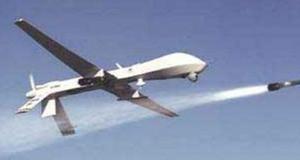UAVsOne in three of military aircraft are drones
A report by the Congressional Research Service (CRS) recently made public reveals that unmanned drones now account for 31 percent of all military aircraft

UAVs now make up a third of military aircraft // Source: whale.to
A report by the Congressional Research Service (CRS) recently made public reveals thatunmanned drones now account for 31 percent of all military aircraft.
In contrast, in 2005, drones only comprised 5 percent of the military’s fleet of aircraft. Now the military has a total of 7,494 drones and 10,767 traditional planes. The bulk of the military’s drone arsenal consists of the Raven, a small surveillance drone which the Army has 5,346 of.
The report notes that the explosion of drone spending over the last seven years still pales in comparison to the amount that the military allocates to manned planes. According to Wired’s Danger Room, over the past decade, the Pentagon has spent$26 billion on drones, but manned aircraft still command 92 percent of the Defense Department’s aircraft procurement money.
Noting the problems with drones, CRS found that the military has far too many redundant ones in its arsenal and that the unmanned aircraft, originally designed to be cheap, are quite expensive due to the sophisticated sensors and camera systems they are outfitted with. In addition the unmanned aircraft is drowning the military in a torrent of data and taking up substantial portions of bandwidth. For instance one Global Hawk drone needs 500 megabytes per second of bandwidth, which the report said is “500 percent of the total bandwidth of the entire U.S. military used during the 1991 Gulf War.”
Looking into the future, given the current trends in the military, the report predicts that drones will likely take an even more prominent place in the Pentagon’s air strategy. The Navy is currently developing an unmanned aircraft that can take off and land from an aircraft carrier, while other branches are exploring drones that can jam enemy electronics, conduct psychological operations like dropping leaflets, or measure the radiation in the earth’s atmosphere.
More ambitiously, the Air Force has set a goal of developing a “super/hyper-sonic” drone by 2034.
Spencer Ackerman and Noah Schactman of Danger Room aptly conclude, “It’s a good time to be a flying robot.”
